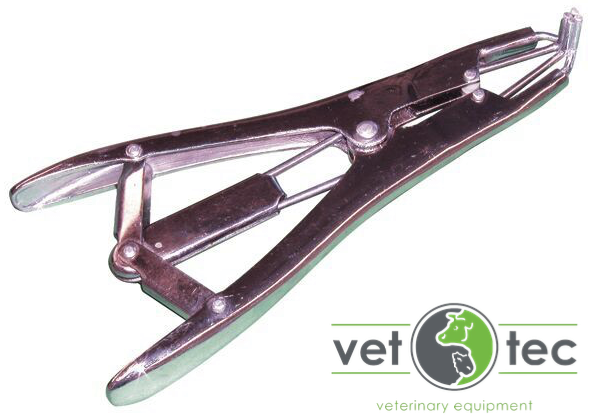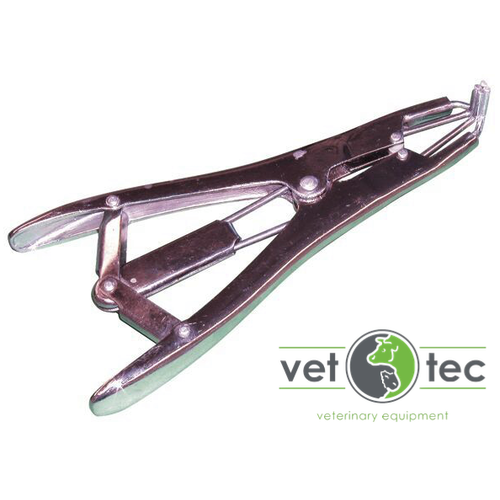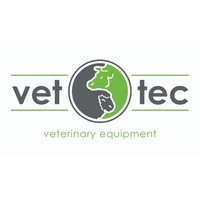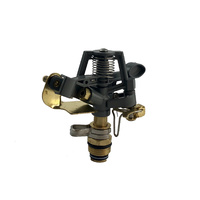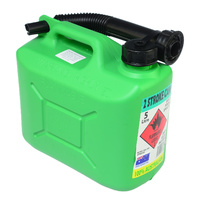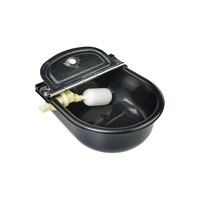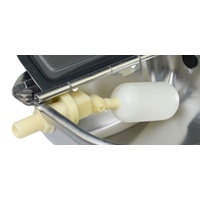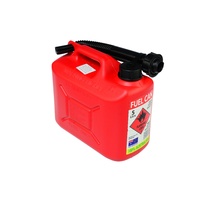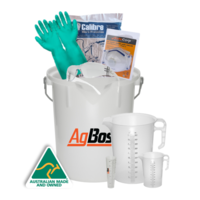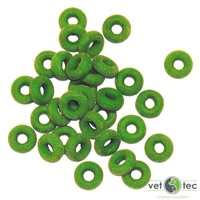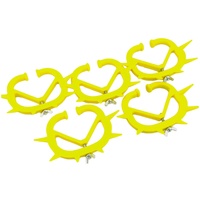Vet-Tec Castration Pliers Metal
Vet-Tec Quality
(TA131)
- Spring loaded
- Easy to use
- All metal construction
- Chrome plated
Methods of castration – Article by Future Beef
With all methods of castration effective restraint (i.e. calf cradle) is essential for the welfare of the calf and the operator. Whether performing surgical or non-surgical castration it is important to disinfect equipment in an antiseptic solution, between animals, and have a separate bucket of antiseptic for washing hands.
Surgical
This is the most commonly used method of castration in Australia.
An incision is made at the bottom of the scrotum using a scalpel blade to expose the testicle. In some cases, the testicles proper may still be hidden behind a thick whitish membrane – the tunica vaginalis. If this is the case it will be necessary to make an incision in the tunica to completely expose the testicle. A deep initial incision ensures the testicle is exposed immediately. The attached ligaments and vas deferens (sperm cord) can be separated from the testicle with the fingers and/or blade.
The testicle can be removed by pulling on the exposed testicle (this is less suitable for older calves) or by rubbing the sharp blade sideways on the exposed cord to scrape the blood vessels. Do not make a clean sharp incision of the cord as this may lead to excessive bleeding. The most desirable method is to remove the exposed testicle using triple crush emasculators which crushes and cuts the blood vessels and hence minimises bleeding. Emasculators are the preferred option for older calves and for castrations done in hotter weather.
Good hygiene is essential when castrating. It is preferable that the scalpel and emasculators are soaked in disinfectant between operations and that the disinfectant is changed after every 20 animals. Poor hygiene may lead to infection which delays healing and may set back growth. Fly control should be considered at certain times of the year. Calves should be vaccinated against tetanus.
Elastrator rings
Applying an elastrator ring for castration.An elastrator ring placed above the neck of the scrotum will cut off all blood vessels and after a period of time (usually three to six weeks) lead to that part of the scrotum and its contents (mainly the testicles) dropping off.
Some cattle breeders prefer this method because it is a non-invasive method of castration. Another advantage of elastrator rings is that little or (usually) no bleeding occurs. There is no scientific evidence that use of elastrator rings reduces contamination by tetanus or other organisms.
Because the elastrator rings are designed and made for use on sheep, they are generally only able to be used on smaller calves. It is difficult to place the ring above the testicles of larger animals. The Australian Code of Practice for the Welfare of Animals states that elastrator rings are only suitable for calves under two weeks of age.
Burdizzo (Bloodless castration pincers)
Burdizzos are another castration tool. Burdizzo is the trade name for an Italian made bloodless castration pincers. The principal of operation is similar to that of the elastrator ring. If used correctly the blood vessels and spermatic cord are meant to be irreparably crushed, thus stopping blood supply preventing testicle growth and function. Within six weeks atrophy of the testicles should be complete.
This technique is successful when used by experienced operators. Due to risk of failure it is not recommended for use by inexperienced operators. There appears to be less pain and there is reduced risk of infection as the wound is not open.
The Burdizzo has the advantage of elastrator rings in that it is non-invasive and causes no bleeding. Unlike elastrator rings it can be used on older animals. However, the Australian Code of Practice for the Welfare of Animals states that this method should only be used on calves under six months of age if done without anaesthetic.
| SKU | TA131 |
| Barcode # | 9.33E+12 |
| Brand | VET-TEC |
| Shipping Weight | 0.3160kg |
| Shipping Width | 0.110m |
| Shipping Height | 0.020m |
| Shipping Length | 0.210m |
| Unit Of Measure | ea |
| Assembled Length | 0.210m |
| Assembled Height | 0.020m |
| Assembled Width | 0.110m |
Be The First To Review This Product!
Help other AgBoss Group Pty Ltd users shop smarter by writing reviews for products you have purchased.

